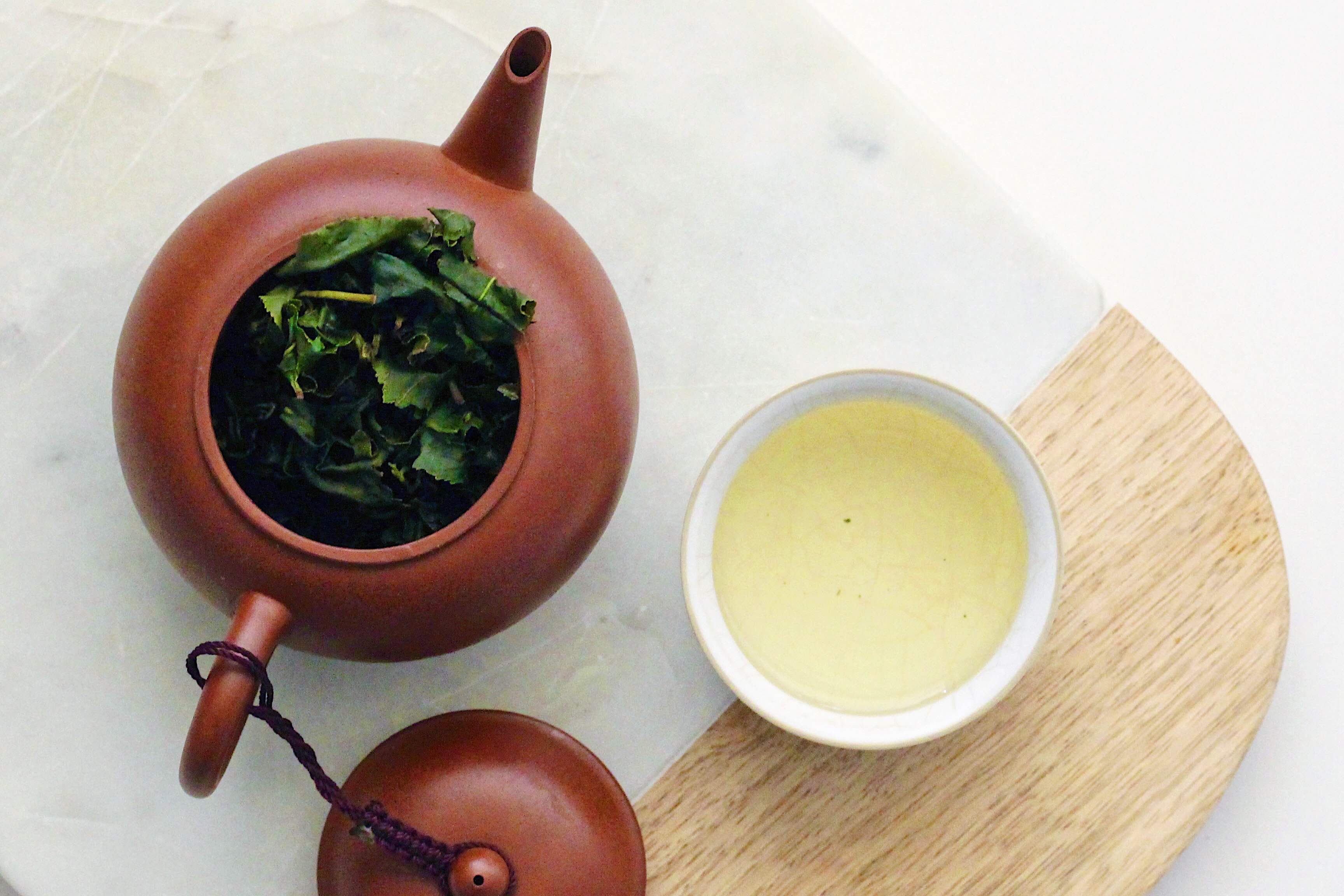8 Ways to Use Tea as Self-Care, From a Philly Tea Consultant
Philly's resident tea expert, Alexis Siemons, shares her secrets.

Philly tea consultant Alexis Siemons has all the tips to make tea your favorite new self-care tool. / Photograph courtesy Alexis Siemons
To me, tea might be the most soothing thing on the planet.
I have so many important memories associated with it that it’s difficult to pick just one to talk about. After my parents divorced when I was seven, my sister and I would visit my father two weekends a month, and he made regular rituals out of drinking steaming mugs of peppermint tea (excuse me, herbal blends) and eating giant Mrs. Fields chocolate chip cookies. When I go home to Michigan now over the holidays, flying in on a red eye and landing close to 1 in the morning most times, my mother and I talk into the bleary hours of the night over her signature combo of decaf chai and Bengal Spice. I began falling in love with an ex-boyfriend on a date when we toured the Celestial Seasonings tea factory in Boulder, Colorado. While everyone else complained about the overwhelming scent of peppermint in the designated peppermint room, we grinned at each other sheepishly, lightheaded.
For decades, though, I’ve been the exception. America, with its productivity obsession and caffeine addiction, has historically been the country of coffee. But tea has been gaining traction, in New York, San Francisco, and yes, Philly, as the antidote to that go-go-go lifestyle — a wellness tool that encourages self-care in the form of slow rituals. “I’d seen it coming with the rise of our much greater concern for health and actually taking control of it beyond a diet or a pill,” says Alexis Siemons, a Philly-based tea consultant. (Yes, that’s a real thing.) “The combination of the health and wellness aspect and the culinary curiosity has really changed the market.” So much so that Siemons has done everything from creating a tea line for La Colombe to teaming up with the renowned Fork Restaurant for curated, floral-themed tea tastings — timed to the Philadelphia Flower Show, which starts this Saturday — on March 2nd and 9th.
Fortunately, this tea movement goes beyond the herbal sachets I grew up buying. (I, too, have matured and now own an electric kettle that has different temperature buttons for different types of tea. #wouldrecommend.) But navigating the more complex, loose-leaf world can be intimidating if you’re just starting to recognize its wellness wonders. That’s why Siemons passed along tips to make it easy to explore this vast space.
1. Make sure you’re giving the leaves room to breathe. We know tea bags are easier to work with, but they can also suffocate the leaves so you don’t get as much flavor. You don’t even need a fancy infuser — if you put the leaves directly in your teapot while you’re heating up the water, you can just strain them through a standard kitchen strainer when you’re pouring the tea into your mug.
2. Pay attention to temperature and steep time. Specific directions will vary depending on the tea, but generally, Siemons says the water should be:
- Close to boiling for black teas and herbals with a steep time of about five minutes.
- Between 170 and 180 degrees for greens with a steep time of about three minutes.
- About 180 degrees for whites with a steep time of three minutes.
- Anywhere from 180 degrees to boiling for oolongs and a steep time of three to five minutes.
3. Replace your sugary coffee in the morning or afternoon soda with tea. Bam! You’re being healthier.
4. Host a happier hour. Instead of wine or beer, ask guests to each bring one type of tea (and maybe cheese. Always cheese.) And make sure to put your steeped beverage in a wine glass. It’ll feel like more of a treat.
5. Try cold-brewing your tea. You’re obsessed with cold-brewed coffee; why not try the trendy method with tea? Siemons recommend putting it loose with cold water in an airtight container like a jam jar and sticking it in your fridge. You can even throw in herbs or fruit that’s on its way to going bad. Taste your blend at four, eight, even 16 hours to see which flavor you prefer. Every time you do that, you’re taking a few minutes for yourself without even realizing it.
6. If you’re getting a to-go cup of tea, leave the lid off. “Half the experience is the aroma,” Siemons says. “If you’re walking down the street with a tumbler, you’re missing out.”
7. If you have 30 minutes, steep an oolong tea. “I consider them the fine wines of tea,” Siemons says, “not only because they are much more labor-intensive, so they’re usually more artisan, handcrafted teas, but also because they’re meant to be steeped several times.” Going through that ritual — letting the water come to the right temperature, smelling the tea as it hits the water, watching the leaves open up and bloom — and then repeating the process allows your mind to focus on just one thing amid your otherwise multi-tasking-filled day.
8. Don’t drink a complex tea like an oolong when you’re sick. Generally, Siemons doesn’t like thinking of tea as medicine (“The artistry of it is lost when you do that,” she says), but if you’re going that route, avoid her fave oolongs because you won’t be able to taste the layers of flavor. Instead, go for something with ginger, turmeric, and honey to soothe your throat.


